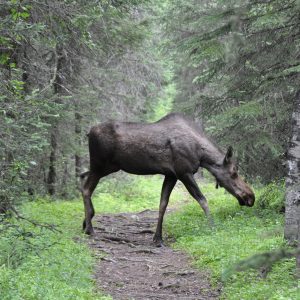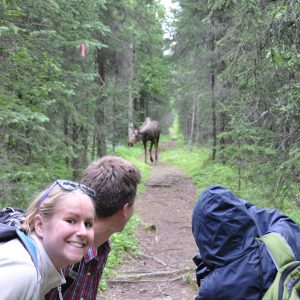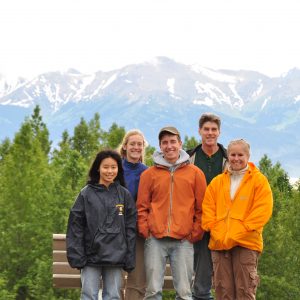Second Law of Thermodynamics: Entropy ! What can go wrong, will go wrong…but it’s great!
One of the aspects of field work that I love so much is that you can’t really ever predict how a day will turn out. Unexpected things happen on a whim and it seems like, what can go wrong, will in fact go wrong. Working in San Diego county is no exception. This is my third blog of my internship, and reflecting back, there have been plenty of moments in the field that stand out in my mind as being particularly hazardous, problematic and exciting!
Our coverage area includes all of San Diego county so we have been collecting seeds for SOS in desert, desert transition, oak woodland chaparral, and coastal sage scrub. So far, we’ve managed to get our truck stuck in some soft sand in the desert. Here’s a tip: you can use the emergency break depressed halfway down to transfer power away from back wheels if they are stuck, keep them from spinning and help pull you out of a tricky situation. I’ve also used the emergency break halfway down trick to avoid rolling backwards in a tight turn around area with steep cliffs. Another time at a mountainous chaparral area, we got the front of our truck stuck over a massive boulder and a simultaneous flat tire. Through this incident, we learned that 4” by 4” boards can be your best friend in lifting your wheels just enough to get over an obstacle. We got our flat on a steep incline so we had to drive the truck down the hill with a complete flat tire, but- no permanent damage was done. Pheu!
To continue on with the truck theme, we’ve had some interesting issues figuring out the particularities of the Ford F 150 off road edition. At one point we got the transmission stuck in 4 WD low gear. This wouldn’t be much of a problem but we usually take a freeway to get back from this site and didn’t think we’d survive on CA freeways driving under 45 mph! After consulting the WONDERFUL mechanics at the Wild Animal Park, we learned the trick to getting it to drop back into 2 WD is to put the truck in neutral and then PUSH it about 10 feet forward and then backward. It worked! That very same day, the driver’s side door kept rattling as though it was loose, and when my fellow intern fiddled with the lock to correct it, it shifted into the lock position and then refused to close at all. What to do? An option would have been to drive all the 2 hours all the way back with the driver holding the door shut with her hand, or we could have bungee corded the door shut and wrapped it around the driver’s head rest. But then that wouldn’t be safe, and then the door handle would have slowly started to detach itself from the door… And then after inspecting another door to figure out how the doors locked, the driver’s side backdoor was stuck open as well! The good news, is that we were able to procure a screw driver and after some fiddling, I fixed both doors and we drove home safely. J
Another issue we’ve been running into frequently are gates. We’ve been locked out of gates unexpectedly and had to abandon collections at the site. Even more peculiar is getting locked INTO areas and not being able to exit. At one site, we entered the preserve through the main gate with our key and relocked it behind us as we normally do. A few hours later when we come to exit the area, we notice that our master lock has been removed and replaced by a shiny, new combination lock- of which we don’t have the combination. We were able to get out when a border patrol officer drove by. This is when we learned that the new lock belonged to the Border Patrol. Why did they remove our lock and replace it with theirs? This is one mystery that has yet to be solved! A word of warning: be careful entering through gates that are open- but which can be locked. Getting locked in is no fun and dangerous.
Other fun and scary things about field work in San Diego are rattlesnakes, of which we’ve had several sightings and near misses, bobcats and earthquakes! We came here in the summer of earthquakes and have experienced 4 shakers in the past 4 months.
Angelique Herman
San Diego Zoo Institute for Conservation Research
Escondido, CA
Blog #3

































